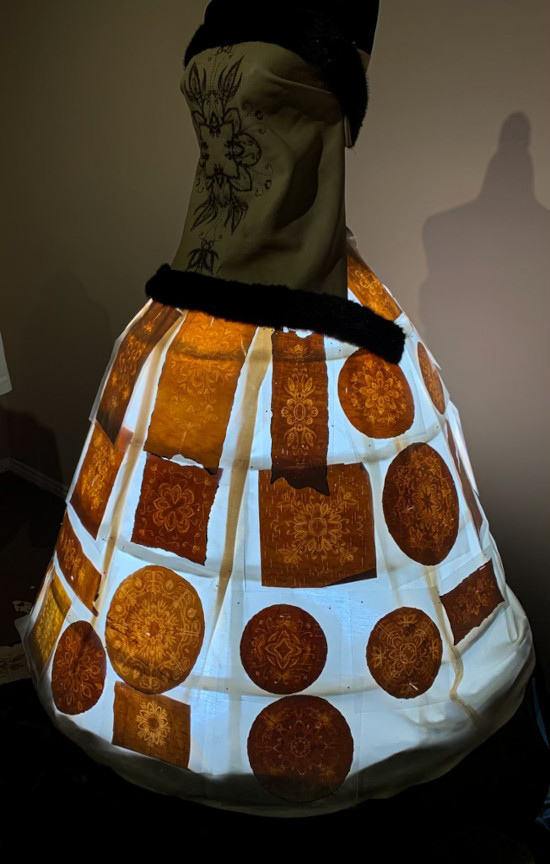Giving back by biting back
Urban Shaman show spotlights Indigenous resilience through traditional artform

Pat Bruderer’s Biting Back: Our Cultural Resilience runs until March 16 at the Urban Shaman art gallery (203-290 McDermot Ave.). - Supplied photo
Forty years ago, Pat Bruderer, known as Halfmoon Woman, met the late Angelique Merasty, a world-renowned birchbark biting artist, while working at a friendship centre in Thompson.
“She brought some birchbark bitings, and the first time I saw them, I thought ‘wow, I could never do this,’” Bruderer says. “They were just beautiful.”
Due to the devastating impacts of residential schools, the Indigenous art form – created by carefully biting designs into pa- per-thin layers of folded birchbark – faced near-extinction, as future generations were severed from their cultural practices.
Later, while working as a children’s art instructor, a student asked Bruderer if she knew how to birchbark bite. Determined to learn and revive the practice, she gathered a handful of birch from a neighbour and slowly taught herself the art form.
“I never had a teacher. I’m a self-taught artist,” Bruderer says. “The reason why I was so adamant about doing this art form was because I was concerned that it would get lost.”
From now until March 16, the Urban Shaman Contemporary Aboriginal Art Gallery will host Bruderer’s exhibition, Biting Back: Our Cultural Resilience. The solo show features dozens of Bruder’s birchbark biting works from over the years, each with a unique story.
Biting Back is both a reclamation of the art practice and a call to action. Through visual narratives about Indigenous cultural resilience, it situates viewers in the past, present and future.
Upon entering the gallery, visitors encounter a work drawing attention to the national housing crisis in many Indigenous communities. According to 2021 Statistics Canada data, more than one in six Indigenous people live in overly crowded housing and are three times more likely to live in a dwelling in need of major repairs compared to non-Indigenous people in Canada.
“Now, a lot of times, a tipi would be better as a dwelling than the housing that people have today,” Bruderer says. “That’s why, in my exhibit, I’m trying to make other people aware (who) maybe don’t understand the crisis that we have in our own First Nations communities.”
Other works, such as “Ancestral Heartbeat,” tell stories about familial relations. Stationed on an entire wall, a chain of round drums etched with birchbark bitings is strung together by a cord.
“The first sound we hear is our mother’s heartbeat,” the statement of the work reads. “The cord that connects the drums is a symbolic representation of our mother’s umbilical cord. It carries the spark of life from one generation to the next; each one impacting the one before and the one after.”
Today, Bruderer is doing her part to carry the spark of generational knowledge. She teaches the art of birchbark biting to as many as 5,000 pupils a year.
A once-endangered cultural practice, Bruderer is hopeful that the art form will be passed on to many generations to come.
“Birchbark biting is a very beautiful artform, but, as Indigenous people, a lot comes with that. We carry ourselves into the future, but all of that comes with us,” she says. “We are resilient people. We have to be.”
Published in Volume 78, Number 18 of The Uniter (February 15, 2024)





